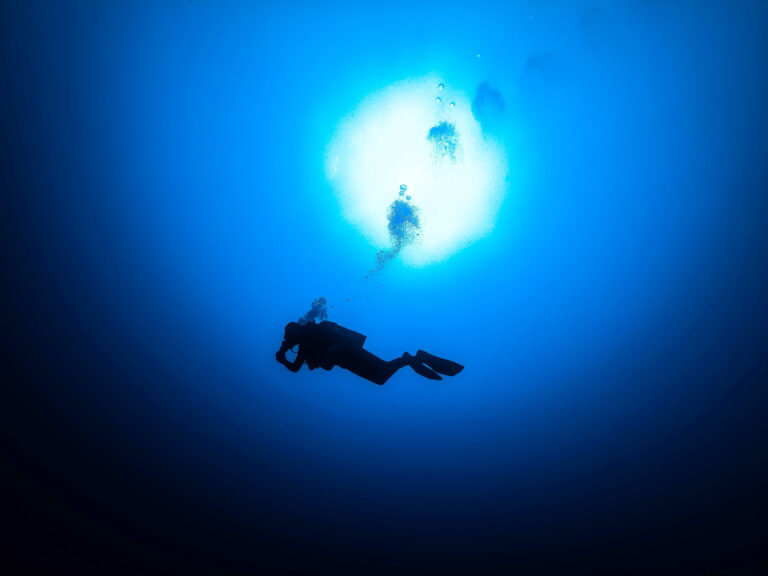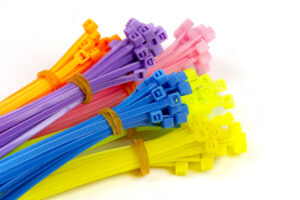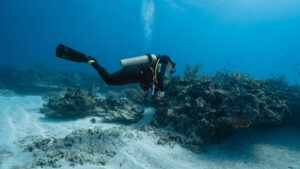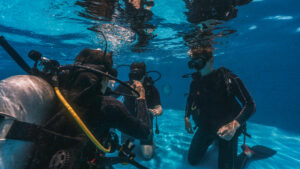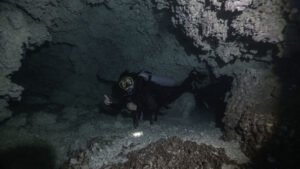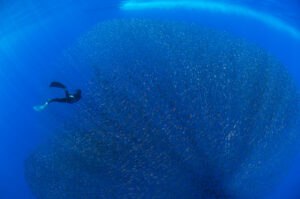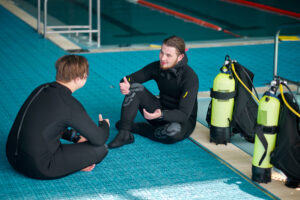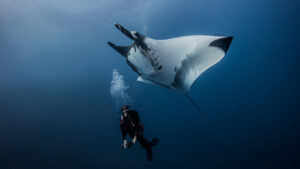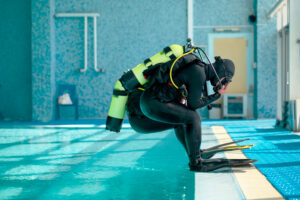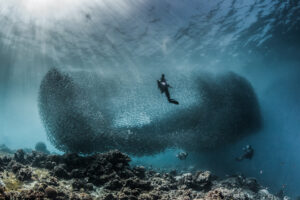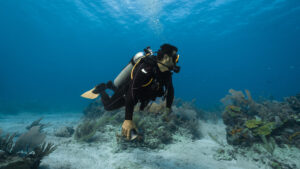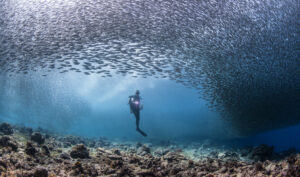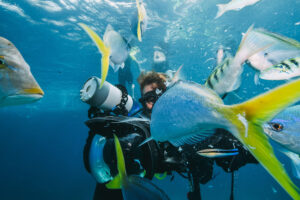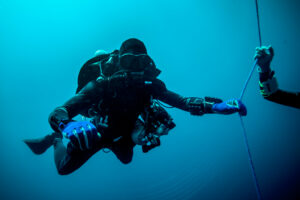What is a Dive Light?
A dive light is an essential tool for scuba divers, providing illumination in the underwater environment where natural light is often limited. These specialized lights are designed to withstand the harsh conditions of the underwater world, including pressure, moisture, and temperature variations. Dive lights enhance visibility, safety, and the overall diving experience, making them indispensable for night dives, cave dives, and exploring shipwrecks. They also aid in underwater navigation and communication, helping divers signal each other and identify landmarks. With advancements in technology, dive lights have evolved to offer various features tailored to different diving needs.
History of Dive Lights
The history of dive lights dates back to the early 20th century when divers first began using rudimentary forms of underwater lighting. These early dive lights were often bulky and unreliable, using incandescent bulbs and heavy battery packs. Despite their limitations, they marked a significant step forward, allowing divers to extend their explorations into darker and deeper waters.
In the 1950s and 1960s, improvements in battery technology and the development of more efficient light bulbs led to the creation of more practical and portable dive lights. These lights were still relatively basic, but they provided a reliable source of illumination for recreational and professional divers alike. The introduction of sealed beam lamps, commonly used in automotive headlights, further improved the durability and brightness of dive lights.
The 1980s and 1990s saw a significant leap in dive light technology with the advent of halogen bulbs and more advanced battery systems. These lights were brighter and more compact, making them easier to carry and use. The increased brightness and improved battery life allowed divers to undertake longer and more challenging dives, pushing the boundaries of underwater exploration.
In the early 2000s, the introduction of LED technology revolutionized dive lights. LEDs offered greater efficiency, longer battery life, and a more focused beam, making them ideal for underwater use. Modern dive lights now incorporate advanced features such as adjustable brightness, multiple beam angles, and rechargeable lithium-ion batteries, providing divers with a versatile and reliable tool for any diving scenario.
Types of Dive Lights
Dive lights come in various types, each designed to serve a specific purpose and meet different diving needs. Understanding these types helps divers choose the right light for their activities.
Primary dive lights are the main source of illumination for divers, providing a powerful and focused beam to illuminate the underwater environment. These lights are typically used during night dives or in situations where natural light is insufficient. Primary dive lights are designed to be durable and reliable, with high brightness levels and long battery life. They often feature adjustable beams, allowing divers to switch between wide and narrow focus as needed.
Secondary dive lights, also known as backup lights, serve as a supplementary light source in case the primary light fails. These lights are smaller and less powerful than primary dive lights but are equally important for ensuring diver safety. Secondary lights are compact and lightweight, making them easy to carry in a pocket or attached to a dive harness. Despite their smaller size, they provide sufficient illumination to navigate and communicate underwater.
Specialty dive lights are designed for specific applications, such as underwater photography, videography, and technical diving. These lights often have unique features tailored to their intended use. For instance, photography lights provide a broad, even beam to minimize shadows and highlight colors, while videography lights offer continuous illumination for filming. Technical dive lights, used in cave and wreck diving, are built to withstand extreme conditions and provide a reliable light source in confined and challenging environments.
Technical Specifications
Understanding the technical specifications of dive lights is crucial for selecting the right light for specific diving needs. Key specifications include light output, power sources, and materials used in construction.
Light output, measured in lumens, indicates the brightness of a dive light. Higher lumens mean a brighter light, which is essential for illuminating dark or murky waters. The beam angle, another important specification, determines how wide or narrow the light spreads. A narrow beam, typically around 10-20 degrees, is ideal for penetrating deeper into the water and focusing on specific objects. In contrast, a wider beam, around 60-120 degrees, provides broader illumination for general visibility.
The power source of a dive light significantly affects its performance and reliability. Most modern dive lights use rechargeable lithium-ion batteries, which offer long battery life and consistent performance. These batteries are lightweight and can be recharged multiple times, making them cost-effective and environmentally friendly. Some dive lights still use traditional alkaline or disposable batteries, which may be more convenient for shorter dives or situations where recharging is not possible.
Materials and durability are critical factors in the design of dive lights. The housing of a dive light is typically made from robust materials like aluminum or high-grade plastic, ensuring it can withstand the pressure and impact of underwater use. O-rings and seals are used to prevent water ingress, maintaining the light’s functionality at various depths. Additionally, many dive lights feature impact-resistant lenses and corrosion-resistant coatings to enhance their longevity and reliability.
Practical Applications
Dive lights serve several practical applications beyond simply providing illumination. Their role in navigation, communication, and underwater photography makes them versatile tools for divers.
In underwater navigation, dive lights help divers maintain orientation and follow predetermined routes. They illuminate reference points and landmarks, such as underwater buoys, rock formations, or wrecks, ensuring divers can navigate safely and effectively. In low visibility conditions, such as murky waters or night dives, a powerful dive light is essential for identifying surroundings and preventing disorientation.
Communication between divers is another critical application of dive lights. Divers use lights to signal each other, convey messages, and indicate directions. Different light signals, such as sweeping the beam in specific patterns or flashing the light, can communicate various instructions or alerts. This non-verbal communication is especially important in noisy underwater environments where verbal communication is challenging.
Underwater photography and videography greatly benefit from the use of dive lights. Natural light diminishes quickly with depth, and colors become muted, making artificial lighting essential for capturing vibrant and detailed images. Photography dive lights provide a broad, even beam that reduces shadows and enhances colors, while videography lights offer continuous illumination for shooting high-quality footage. These lights are often adjustable, allowing photographers and videographers to fine-tune the lighting for different scenes and subjects.
Safety Considerations
Safety is a paramount concern for divers, and dive lights play a crucial role in ensuring a safe diving experience. Proper maintenance, handling, and awareness of common challenges can prevent light failures and enhance overall safety.
One of the primary safety benefits of dive lights is their use in emergency situations. If a diver becomes separated from their group or loses their primary light, a secondary dive light can be a lifesaver. It provides the necessary illumination to signal for help, navigate back to safety, and avoid potential hazards. Divers should always carry a backup light and ensure it is fully functional before each dive.
Proper maintenance and handling of dive lights are essential for their reliability and longevity. Divers should regularly check the O-rings and seals for wear and tear, ensuring they remain watertight. Cleaning the light after each dive, especially if used in saltwater, prevents corrosion and extends its lifespan. Recharging batteries fully and inspecting the light for any physical damage before a dive can prevent unexpected failures.
Common challenges divers may face with dive lights include battery depletion, water leakage, and beam failure. To mitigate these risks, divers should carry spare batteries or a secondary light and test their equipment before each dive. Understanding how to troubleshoot minor issues, such as replacing O-rings or cleaning battery contacts, can also prevent major problems underwater.
Environmental Impact
While dive lights are essential tools for divers, their use can impact the underwater environment. Responsible use and awareness of best practices can minimize these effects and help protect marine ecosystems.
Artificial lighting can disturb the natural behavior of marine life, particularly nocturnal species. Bright lights may attract or repel certain animals, disrupt feeding patterns, and interfere with mating behaviors. Divers should use lights with adjustable brightness settings, lowering the intensity when observing sensitive wildlife to reduce disturbance.
Light pollution is another concern, especially in popular diving areas with frequent night dives. Excessive artificial lighting can alter the natural light cycles of marine ecosystems, affecting the health and behavior of various species. Divers and dive operators should be mindful of the cumulative impact of artificial lighting and follow guidelines to minimize light pollution.
Using dive lights responsibly also involves avoiding direct illumination of delicate organisms, such as corals and anemones, which can be harmed by intense light exposure. Divers should aim their lights away from sensitive habitats and focus on broader illumination rather than spotlighting individual organisms. Educating divers on the environmental impact of dive lights and promoting eco-friendly diving practices can help preserve the beauty and health of underwater ecosystems.
Key Takeaways
Dive lights are indispensable tools for scuba divers, offering essential illumination in underwater environments where natural light is limited. Their history, from early rudimentary designs to advanced LED technology, highlights significant technological advancements that have improved their functionality and reliability. Understanding the different types of dive lights, their technical specifications, and practical applications helps divers choose the right light for their needs. Safety considerations and responsible use are crucial to ensure a safe and environmentally friendly diving experience. By incorporating these aspects, divers can enhance their underwater adventures while protecting the delicate marine ecosystems they explore.

